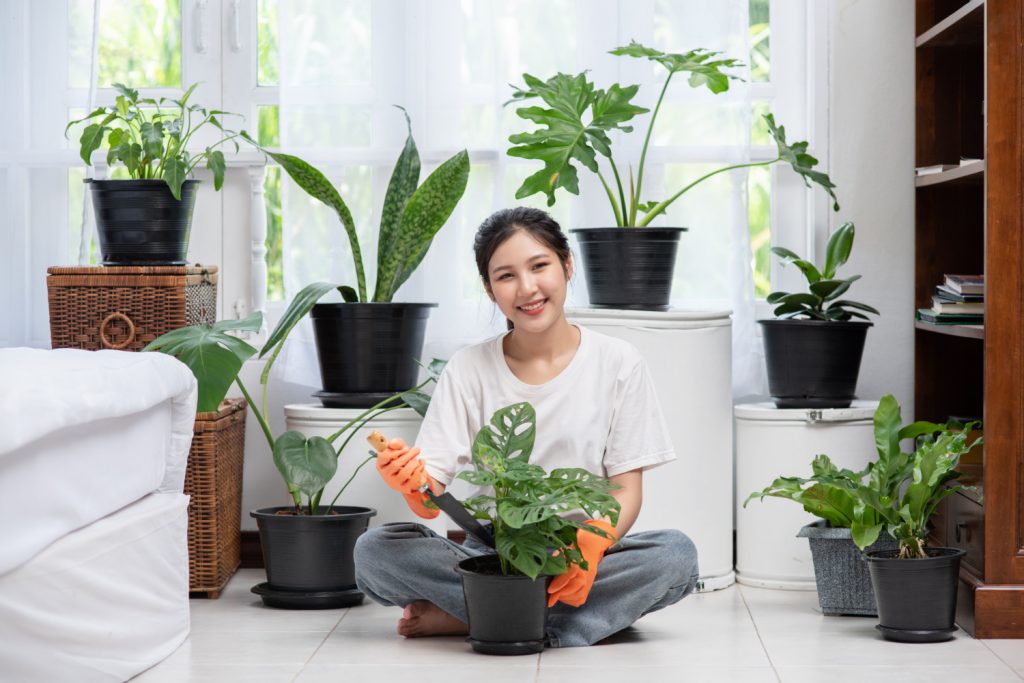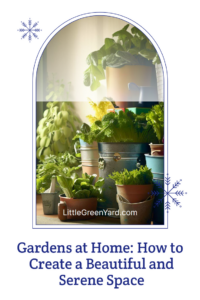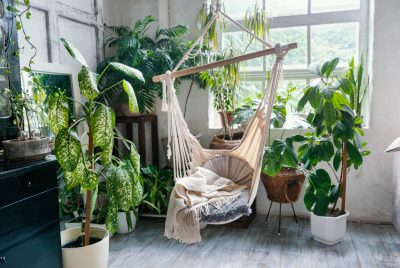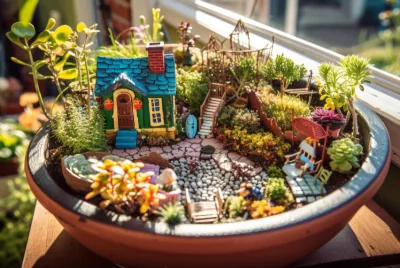Gardens at Home: How to Create a Beautiful and Serene Space
In this article, I’ll share some of my tips for creating beautiful and serene gardens at home. I’ll cover everything from choosing the right plants to maintaining your garden. So whether you’re a gardening novice or a seasoned pro, I hope you’ll find some helpful suggestions here.
I’ve always been an enthusiast of using small spaces at home to create separate zones. I love the way that greenery can uplift the ambience of a space, and I’ve found that even a small garden can make a big difference. With a little planning, you can create a beautiful and inviting garden in even the smallest of spaces. Also, there are added benefits of improved air quality within the space itself!
1. Choose the right plants for your space.
The first step to creating beautiful gardens at home is to choose the right plants for your space. Think about the amount of sunlight your space gets, the type of soil you have, and the climate you live in. Once you know these factors, you can start to narrow down your choices.
If you have a small space, consider choosing compact plants that won’t outgrow their container. You can also use vertical gardening techniques to maximize your space. For example, you could plant herbs in hanging baskets or train vines to grow up a trellis.

Living in an apartment? These plants are suitable:
- Succulents: Succulents are a great choice for small spaces because they are drought-tolerant and can thrive in low-light conditions. Some popular succulents for apartments include aloe vera, cacti, and jade plants.
- Herbs: Herbs are another great option for apartment gardening. They are relatively easy to grow and can be used in cooking. Some popular herbs for apartments include basil, mint, parsley, and thyme.
- Ferns: Ferns are a type of plant that is known for its lush foliage. They can add a touch of greenery to any space and are relatively easy to care for. Some popular ferns for apartments include Boston fern, maidenhair fern, and asparagus fern.
- Air plants: Air plants are a unique type of plant that does not require soil to grow. They can be attached to a piece of driftwood or a piece of bark. Air plants are a great way to add some greenery to a small space.
- Indoor trees: If you have enough space, you could also consider growing an indoor tree. Some popular indoor trees for apartments include ficus trees, rubber trees, and money trees.
When choosing plants for your apartment, it is important to consider the amount of sunlight your space gets. If you have a lot of natural light, you can choose a wider variety of plants. However, if you have limited sunlight, you will need to choose plants that are tolerant of low light conditions.
2. Group plants together for a cohesive look.
Once you’ve chosen your plants, it’s time to start grouping them together. This will help to create a more cohesive look and make your garden easier to maintain.
You can create different gardens at home simply by using different ways to group plants together. Here are some of the most common methods include grouping them by:
- Color: This is a great way to create a colorful and vibrant display. For example, you could group together plants with red, orange, and yellow flowers, or you could group together plants with green, blue, and purple leaves.
- Height: This is a great way to create a sense of depth and interest in your garden. For example, you could group together tall plants in the back of your garden, medium-height plants in the middle, and short plants in the front.
- Type: This is a great way to create a specific look or feel in your garden. For example, you could group together all of your succulents in one area, or you could group together all of your herbs in another area.
- Texture: This is a great way to add visual interest to your garden. For example, you could group together plants with smooth leaves, plants with fuzzy leaves, and plants with spiky leaves.
No matter how you choose to group your plants, the most important thing is to have fun and be creative. There are no right or wrong answers, so just experiment until you find a look that you love.
Additional tips for grouping plants together:
- Consider the size of your space: If you have a small space, you will need to choose smaller plants that will not outgrow their container.
- Consider the amount of sunlight your space gets: If you have a lot of natural light, you can choose a wider variety of plants. However, if you have limited sunlight, you will need to choose plants that are tolerant of low light conditions.
- Consider the overall look you want to create: Do you want a formal or informal look? A colorful or calming look? Once you know what you want, you can start to choose plants that will help you achieve that look.
I found this video to be very useful, especially the techniques to maximize space!
3. Add some garden art to bring your space to life.
Garden art can add a touch of personality to your garden and make it even more inviting. You could add a statue, a birdbath, or even a piece of driftwood.
- It can add a touch of nature to your space: Even if you don’t have a lot of space for plants, you can still bring the outdoors in by adding garden art. A well-placed piece of garden art can help to create a sense of calm and tranquility in your home.
- It can add visual interest to your space: Garden art can help to break up the monotony of a small space and add some visual interest. A well-chosen piece of garden art can also help to define different areas of your home.
- It can increase the value of your home: If you ever decide to sell your home, garden art can help to increase its value. Buyers are often drawn to homes that have a sense of personality and character, and garden art can help to create that.
- It can simply make you happy: Garden art can bring you joy and make you feel more connected to nature. If you love spending time in your garden, adding garden art can help to extend that feeling into your home.
Tips for choosing garden art for your tiny apartment:
- Choose pieces that are lightweight and easy to move: This will make it easier to rearrange your space as needed.
- Choose pieces that are made of durable materials: This will help to protect your art from the elements and wear and tear.
- Choose pieces that are versatile: This will help you to find the perfect spot for your art in your home.
- Choose pieces that you love: This is the most important factor of all! If you love your art, you’ll be more likely to enjoy spending time in your space.
4. Maintain your garden regularly.
The key to keeping your garden looking its best is to maintain it regularly. This means watering your plants, weeding, and fertilizing. It also means deadheading flowers and trimming back plants as needed.
5. Enjoy your garden!
The most important thing is to enjoy your garden. Spend time sitting in your garden, reading a book or just relaxing with a good cup of tea. Let the peace and tranquility of your garden wash over you.
Parting Words
Creating a beautiful and serene garden at home is a great way to add value to your home and improve your quality of life. If you want your gardening to be more environmentally friendly, go ahead and start an organic garden! Let your gardening space be free of chemicals and to ensure that you get the most healthy and natural green space possible. Get more inspiring through these videos now!
FAQs:
1. What are some easy-to-grow plants for small spaces?
Some easy-to-grow plants for small spaces include succulents, herbs, and ferns. These plants are all relatively low-maintenance and can thrive in a variety of conditions. You can create gardens at home now!
2. What are some tips for maintaining a small garden?
Here are some tips for maintaining a small garden:
- Water your plants regularly, especially during hot weather.
- Weed your garden regularly to prevent weeds from taking over.
- Fertilize your plants every few months to keep them healthy.
- Deadhead flowers to encourage new growth.
- Trim back plants as needed to keep them in shape.
3. What are some benefits of having gardens at home?
There are many benefits to having a garden at home, including:
- Improved air quality
- Reduced stress levels
- Increased physical activity
- Increased property value
- Increased appreciation for nature
4. What are some ways to use small gardens at home?
A small garden can be used for a variety of purposes, including:
- Growing food
- Growing flowers
- Providing a place to relax
- Creating a focal point in your yard
- Attracting wildlife
5. Where can I find more information about gardening?
There are many resources available to help you learn more about gardening. You can find books, magazines, websites, and even local gardening clubs.





